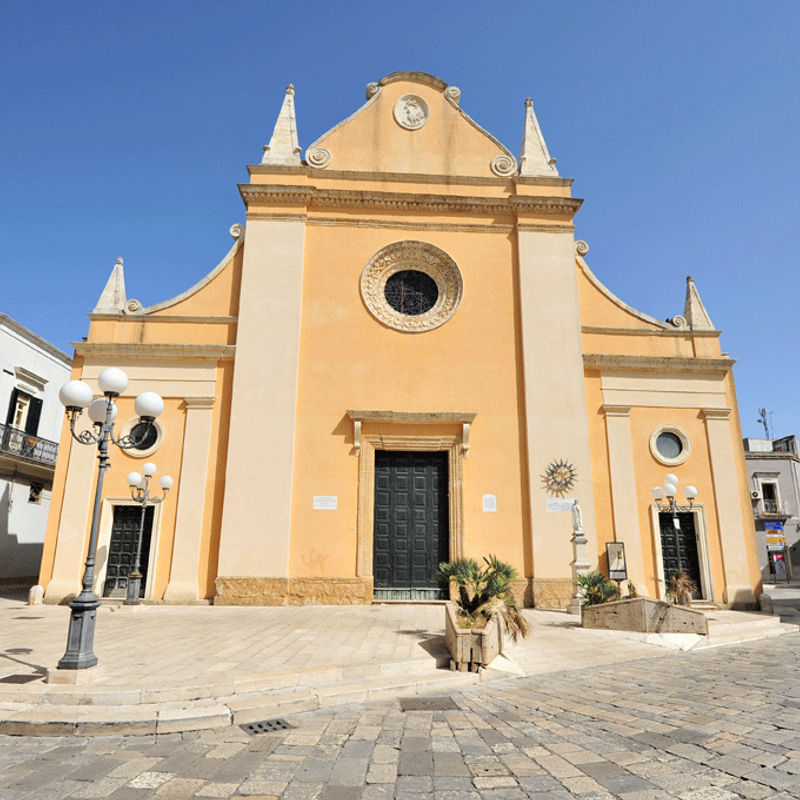
Church Matrice of Maria S.S. Assunta

The church, which today majestically dominates the beautiful Piazza del Popolo in front of the old Town Hall, has undergone several transformations over the centuries. Enlarged in the 17th century, it underwent a major renovation in 1758 and was extended to three naves at the turn of the 19th and 20th centuries. All that remains of the original building is the nave and the precious oval rose window in Lecce stone depicting the Assumption of the Virgin Mary, the absolute protagonist of the great 17th-century façade with its pure lines of neoclassical inspiration. Other testimonies are kept in the basement of the presbytery, where there are ancient crypts and tombs of the clergy, recently rediscovered (1973), which confirm that the building once also served as a burial place.
The interior is divided into three naves with high marble columns with Corinthian-style gilded capitals supporting wide cross vaults. The presbytery closes on the apse, whose semi-dome repeats a checkerboard pattern with a delicate two-tone play of white-gilded cornices and stuccoes. While the side aisles contain several altars with statues, paintings and valuable religious objects, the main altar is dominated by the Assumption altarpiece, flanked by as many precious 17th-century paintings. The church also houses the statues of the three patron saints of the city: that of St. Peter the Apostle, an 18th century work of the Venetian school, and those of the Madonna del Carmine and St. Antonino in papier-mâché, as well as the 18th century statue of the Virgin of Sorrows and the 19th century statue of St. Agnes.
The large 19th-century pipe organ on the front of the building is worth seeing.
In addition to being a treasure trove of artistic wonders, the church is also the protagonist of the tradition of the flag auction, a celebration that takes place every year on the Sunday after Easter, a participatory historical re-enactment of the victory over the Turks in 1480, when the brave people of Sampietrani managed to repel the enemy attack by winning their flag, a trophy later dedicated to Saint Peter in thanks for his intercession. The event involves all the inhabitants of the town and the many tourists who come to watch the "Giostra della Papara", the traditional palio in which knights, dressed as in the Middle Ages in the colours of their district and armed with lances, compete at a gallop to win the rings to which the puppet known as the "papara" is tied.








